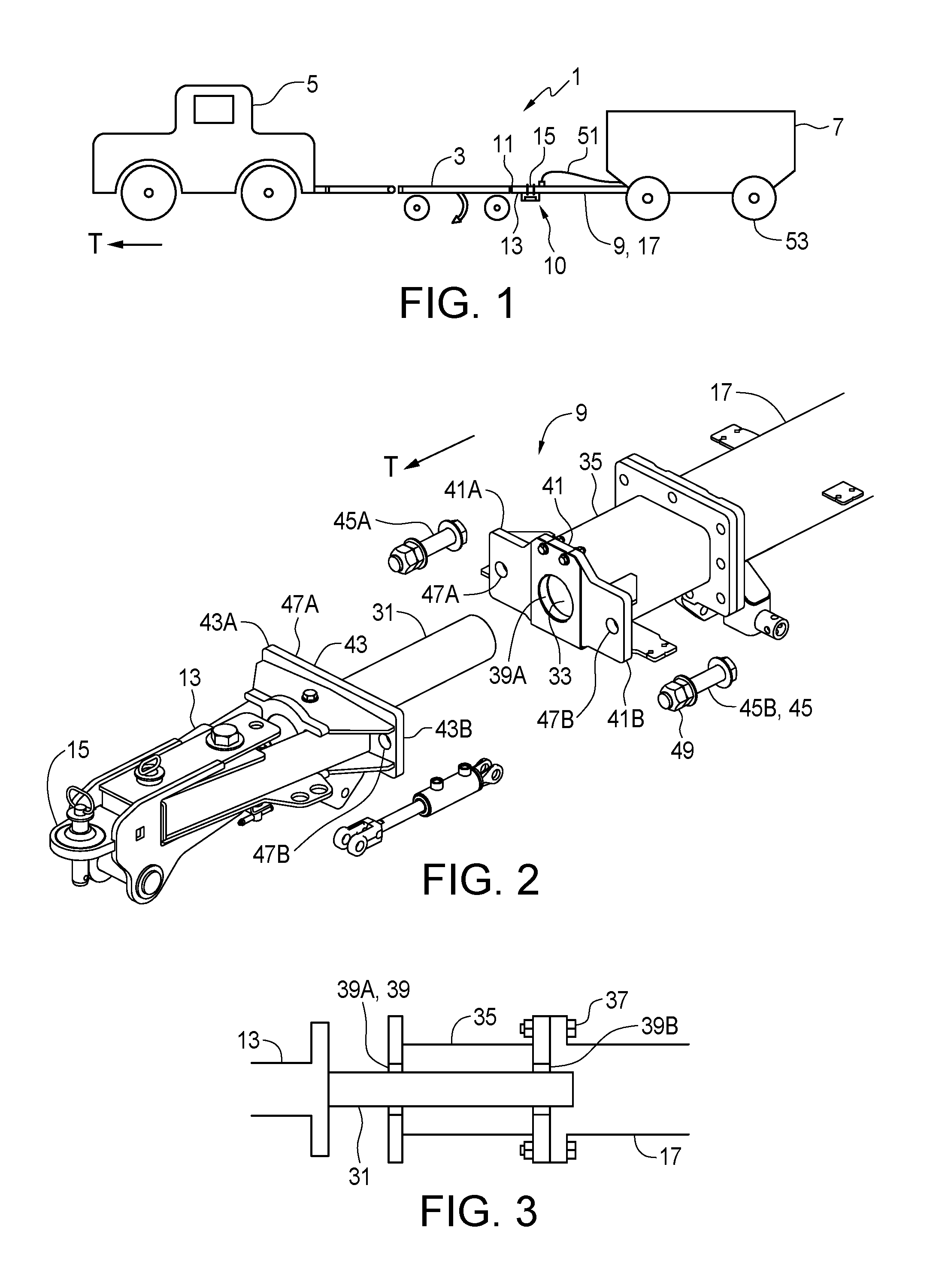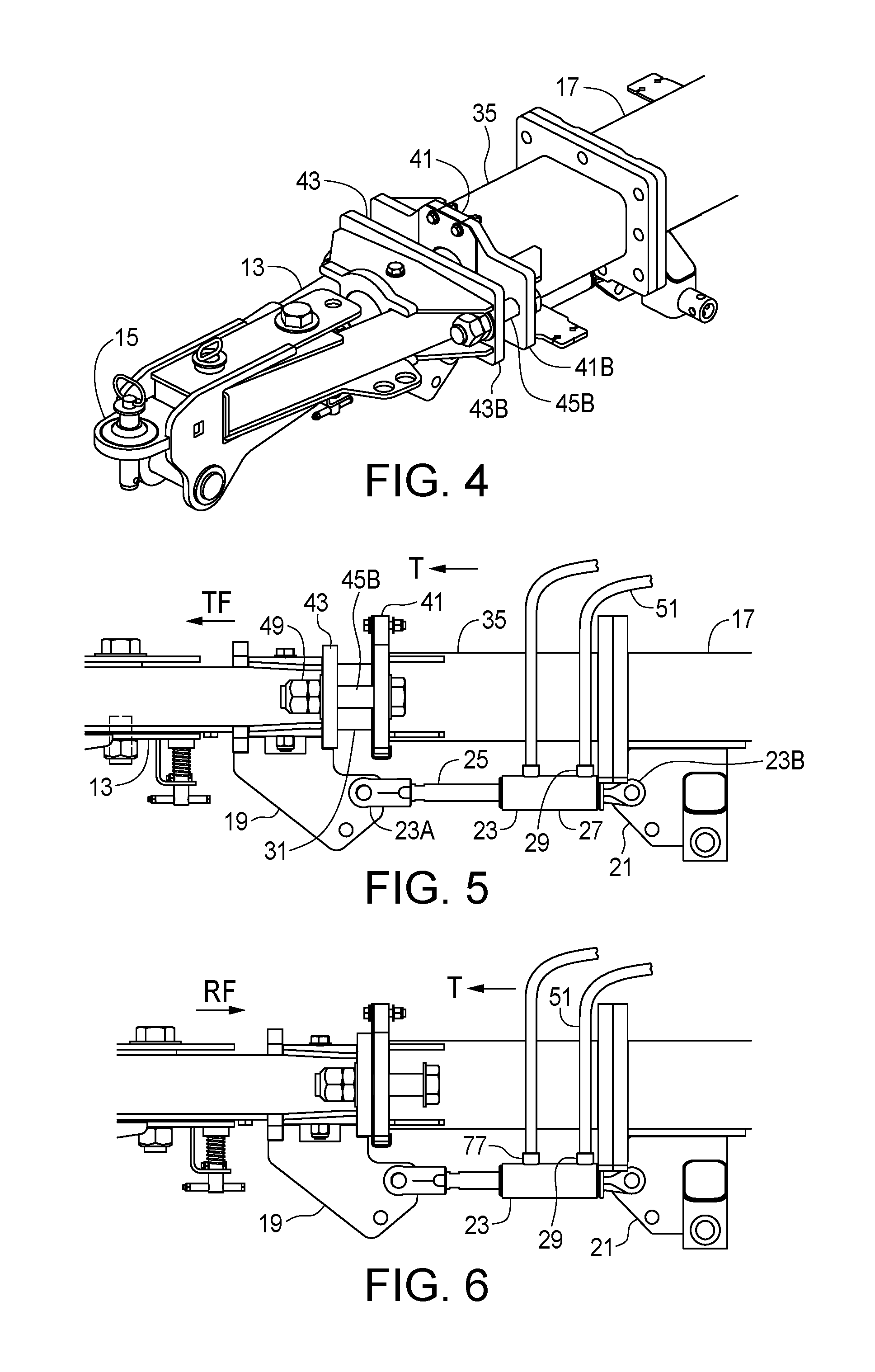Braking system for towed vehicles
a braking system and towed vehicle technology, applied in the field of towed vehicles, can solve problems such as difficulty in providing effective braking for air seeders using conventional towed vehicle braking systems, control issues, and unloading implement trains can still be hazardous, and achieve the effects of facilitating bushing replacement, dampening the brake action, and simplifying maintenan
- Summary
- Abstract
- Description
- Claims
- Application Information
AI Technical Summary
Benefits of technology
Problems solved by technology
Method used
Image
Examples
Embodiment Construction
[0031]FIG. 1 schematically illustrates a common configuration of an air seeder 1 where the furrow opener implement 3 is towed behind the tractor 5 and the product cart 7 is towed behind the furrow opener implement 3.
[0032]An embodiment of a towed vehicle apparatus 10 of the present disclosure is installed on the hitch tongue 9 that connect the towed vehicle, here being the product cart 7, to the tow hitch 11 of a towing vehicle, here being the furrow opener implement 3, for movement in an operating travel direction T. As illustrated in FIGS. 2-6, the hitch tongue 9 comprises a front tongue member 13 with a front end 15 thereof configured to engage the tow hitch 11, and a rear tongue member 17 attached to a front end of the product cart 7.
[0033]In the illustrated hitch tongue 9 the front tongue member 13 is telescopically connected to the rear tongue member 17 such that the front tongue member 13 is movable in the operating travel direction T with respect to the rear tongue member 17...
PUM
 Login to View More
Login to View More Abstract
Description
Claims
Application Information
 Login to View More
Login to View More - R&D
- Intellectual Property
- Life Sciences
- Materials
- Tech Scout
- Unparalleled Data Quality
- Higher Quality Content
- 60% Fewer Hallucinations
Browse by: Latest US Patents, China's latest patents, Technical Efficacy Thesaurus, Application Domain, Technology Topic, Popular Technical Reports.
© 2025 PatSnap. All rights reserved.Legal|Privacy policy|Modern Slavery Act Transparency Statement|Sitemap|About US| Contact US: help@patsnap.com



